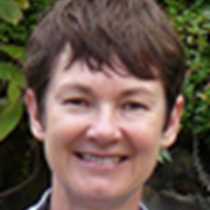Lababia, Papua New Guinea
This morning we awoke to the wonders of Lababia, a coastal village home to over 750 people. This sandy cove stretches for miles under the shadow of the surrounding hills which cascade down into the iridescent blue of the Solomon Sea. The attraction is the 69,000 hectare Kamiali Wildlife Management Area comprising of prime rain forests, mangroves, coral reefs, waterfalls, rivers, and lakes. The only access to this remote village, situated on the mainland of Papua New Guinea, is by boat from Lae or Salamaua. We are welcomed on arrival by the customary sing sing, with a number of groups vying for our attention decked in bright colours, exotic head dresses, and gleaming body oil.
Once our creative side had been sated and our shopping complete we commence our rain forest walk along the Kamiali Trail through the sago swamp and protected rain forest. The Bishop Museum, Hawaii, has been working with traditional landowners in this area to develop a biological field station. This initiative, which is supported by the Swifit foundation, Morgan Family Foundation, and other private donors, along with the Royal Botanical Gardens of Sydney, is addressing a critical research and training need in Papua New Guinea, promoting sustainable use of marine and agricultural resources. We met the instigator of the project, Nero Keposing and his wife Lucy. Under their tutelage the villages have developed community gardens, some hours from the village and share fishing catches in the aim to lessen the strain on the surrounding environment.
Apart from a few muddy creek crossings, encounters with wildlife (small python & spiders) our rambling walk was enjoyable, all the more so with a return by outrigger canoe gliding us past mangrove studded banks to complete the experience.
With so many new friends it was truly hard to break away from this idyllic setting to return to the Oceanic Discoverer. Prior to departure a last-minute photo frenzy captured, what felt like, a majority of the village children swimming, duck-diving, and body surfing onto the volcanic sand shoreline. Once again we were soon underway powering onwards to our next destination. Soon Bob Tonkinson, our resident anthropologist, was sharing the intricacies of the Kula Ring, a trading network in the Trobriand Islands. After dinner, Suzanne Noakes, our other culturist, finished the day with an informal talk on ‘Sing Sing, Songbirds & Sexuality’ recapping the dancers, songs, and presentations we had experienced along this magnificent journey.




